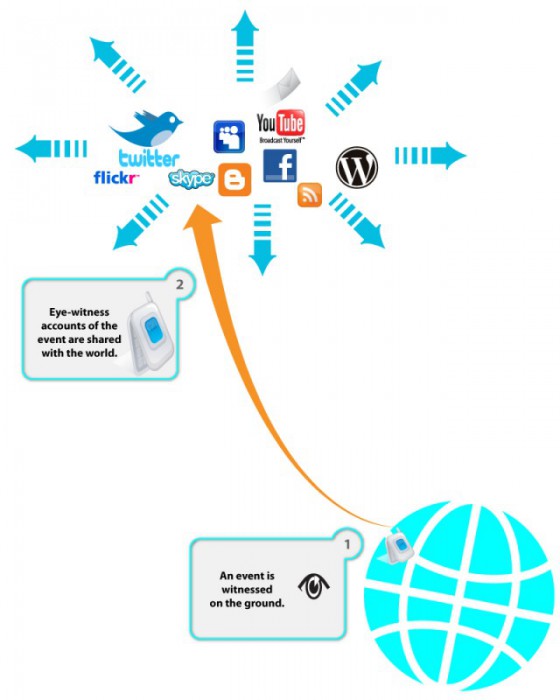I came across this short video: “The White Wolf” by Pierre-Luc Granjon. It is an 8 minute animation short about two brothers living in a small French village. Please pay attention to the story-line (I know it is an obvious thing to pay attention to): would it have been received well in US? Note that it is not more gruesome than “Snow White”… This is why cultural context is so important to product design and why I teach the class!
Background Knowledge Errors
Background Knowledge Errors, Cultural Bias, Group Decision Errors, Mental Model Traps, Misapplication of Problem Solving Strategies, Pipsqueak Articles, Product Design Strategy, Scaffolding
Knowledge, Context, & Expectation
by Olga Werby •

These are three necessary components of any product design: Knowledge: the background information that forms the foundation of product design Context: the ecosystem in which the product will be used Expectation: the alignment of goals between product creators and the users for which it was designed A failure to fully understand any of the above variables results in errors that propagate throughout the product system. But what if the product is disaster preparedness? Consider the design of an evacuation plan ahead of a disaster. You would need to understand the what kinds of damage the disaster is capable of wrecking; the probabilities for each outcome; the people and the ecosystem in which the disaster will occur; and expectations of all the participants in the evacuation plans. Tsunami and The Zoo A few years ago, I was teaching a fifth grade science class where we were discussing the possible damage from a tsunami in San Francisco (we just visited the Bay Model). The problem I posed to the students was to design a reasonable evacuation plan for The San Francisco Zoo animals. The Zoo lies on the tsunami flood plane, and as far as we knew there was no plan for…
Anchoring Errors, Attention Controls Errors, Background Knowledge Errors, Causal Net Problems, Cognitive Blindness, Diagnostic Errors, Mental Model Traps, Metaphor Mistakes, Misapplication of Problem Solving Strategies, Pipsqueak Articles, Working Memory
Information Awareness & Failure Analysis
by Olga Werby •

Given the current state of affairs in Japan’s nuclear facilities, I thought it would be good to do a quick analysis of what’s going wrong and why the officials on the ground act as they do (based on very limited information that’s trickling in via the news sources). As of today (morning of March 14th), we have two reactors that have experienced explosions, partial core meltdowns, and multiple other failures. I’ve put together data from the news with failure analysis for an alternative view of the ongoing nuclear crisis in Japan. Like many aspects of usability, FAA (Federal Aviation Administration) was the first to develop practical understanding of Information Awareness and Failure Analysis—pilots and airplane designers what to minimize errors in flight and understand failure when it happens. Like the rest of the world, I’m extremely grateful for their insight into these two aspects of systems design and usability. Below is a quick introduction to the basics. Information Awareness Information Awareness is a wonderful term that describes the state of user’s knowledge of the problem at any particular time. This means that Information Awareness changes in time and from person to person. For designers of a complex system that aims…
Background Knowledge Errors, Pipsqueak Articles
Decision Scaffolding and Crisis Mapping
by Olga Werby •

I’m working on a series of illustrations to highlight the need for decision scaffolding during an aide mission. The ideas are based on the Ushahidi deployment experience in Haiti after the 2009 earthquake. But the idea is to make this more general. I would love ideas and recommendations on how to make this visualization better and more communicative. (read more about crisis mapping here) Crisis: Smoke Signals from Eye-Witnesses Let’s start with a crisis—a natural disaster or a political upheaval leaves thousands of people in desperate need of help. The people on the ground witness the suffering and use ICT (Information Communication Technology) to send up the spoke signals. Please not that Internet services might be compromised (due to deliberate actions taken by the authorities; infrastructure failures; chaotic conditions on the ground), but people tend to be very creative and use phone lines, radios, satellite links, and just person to person communication to get the information out there. During the current Libyan crisis, people were very creative: “To avoid detection by Libyan secret police, who monitor Facebook and Twitter, Mahmoudi, the leader of the Ekhtalef (“Difference”) Movement, used what’s considered the Match.com of the Middle East to send coded love…
Cognitive Blindness, Featured, Mental Model Traps, Pipsqueak Articles, Product Design Strategy
The Value of Trust in Search
by Olga Werby •

There was an interesting article published on the New York Times the other day: “The Dirty Little Secrets of Search.” The article documented the use of Black Hat SEO strategies on behalf of J. C. Penny, leading J. C. Penny to be at the top of multiple Google search results for months. While J. C. Penny didn’t disclose the boost in revenues that the number one placement on Google search produced during the 2010 Christmas shopping season, we can assume it was substantial. The article raises several alarms: How prevalent is the use of “Black Hat” CEO techniques among large commercial companies selling their services online? Since J. C. Penny is a customer worth several million of ad dollars to Google, did Google (for a time) look the other way? [30-11-2010, BBC News: “EU launches antitrust probe into alleged Google abuses,” last visited on 02-14-2011.] Google administers “Google Hell” punishment to the companies that use “Black Hat” strategies to beat its search ranking algorithms. There’s no court, no arbitration, no negotiation. The company simply vanishes from Google search results. These are all about trust. We—the average online citizens—rely on search results for so many needs now. We research our medical…
Cognitive Blindness, Conceptual Design, Cultural Bias, Cultural Differences, Ethnographic & User Data, Mental Model Traps, Pipsqueak Articles
Thinking About Value
by Olga Werby •

Which car do you find more pleasing? Which car would evoke a feeling of envy? Would you shake your head or starting thinking of how you can improve on the looks of your car? Which car’s origin would you place in the South Asia? Which in South America? Which owner cares about the aerodynamic qualities of the vehicle? Regardless of your personal feelings, the owners of these automobiles have clearly invested a tremendous amount of energy and effort into making them look like this and are very proud of the results! Telling a Story Each of the vehicles above tells a story about its owner and about its culture. The story conveys information: the owner’s goals for the car: utility or status symbol or both cultural value of design cultural symbols owner’s attitude towards possessions (e.g.: How long is the car expected to stay with one owner?) owner’s place in the social hierarchy owner’s unique identity owner’s investment into the vehicle (e.g.: time, money, skill, etc.) the perceived value of the vehicle to its owner These stories of cars and their owners change from culture to culture, from place to place, and of course in time. What we consider beautiful…
Attention, Attention Controls Errors, Cognitive Blindness, Conceptual Design, Cultural Bias, Featured, Flow, Interaction Design, Interface Design, Mental Model Traps, Perceptual Focus Errors, Pipsqueak Articles, Product Design Strategy, Users, Working Memory
Multitasking Myth
by Olga Werby •

I’ve been noticing a lot of praise and demand for mutlitaskers: “We are looking for a talented individual who is [insert a laundry list of qualifications here] and is also a great multitasker!” or “Women are naturally better at multitasking.” or “Not only is he gifted, but he is able to work on all these projects simultaneously. If only we had a dozen more just like him!” (—probably just to get anything done!) The interesting aspect of this increased demand for multitasking is the rise of ADHD diagnosis. So I thought it would be an interesting exercise to pin down what exactly is being praised and diagnosed. A Curious Case of ADHD Let’s start with formal diagnostic criteria for ADHD (attention deficit hyperactivity disorder). What are the symptoms of ADHD? Below is a list of attributes that is adapted from the Diagnostic and Statistical Manual of Mental Disorders 4th ed. (DSM-IV). When you read this list the first time, imagine an eight year old boy trapped in an elementary classroom. On the second reading, consider an 80-year-old woman in a nursing home. On the third, visualize a soldier just back from Afghanistan. And finally, when you read the list for…
